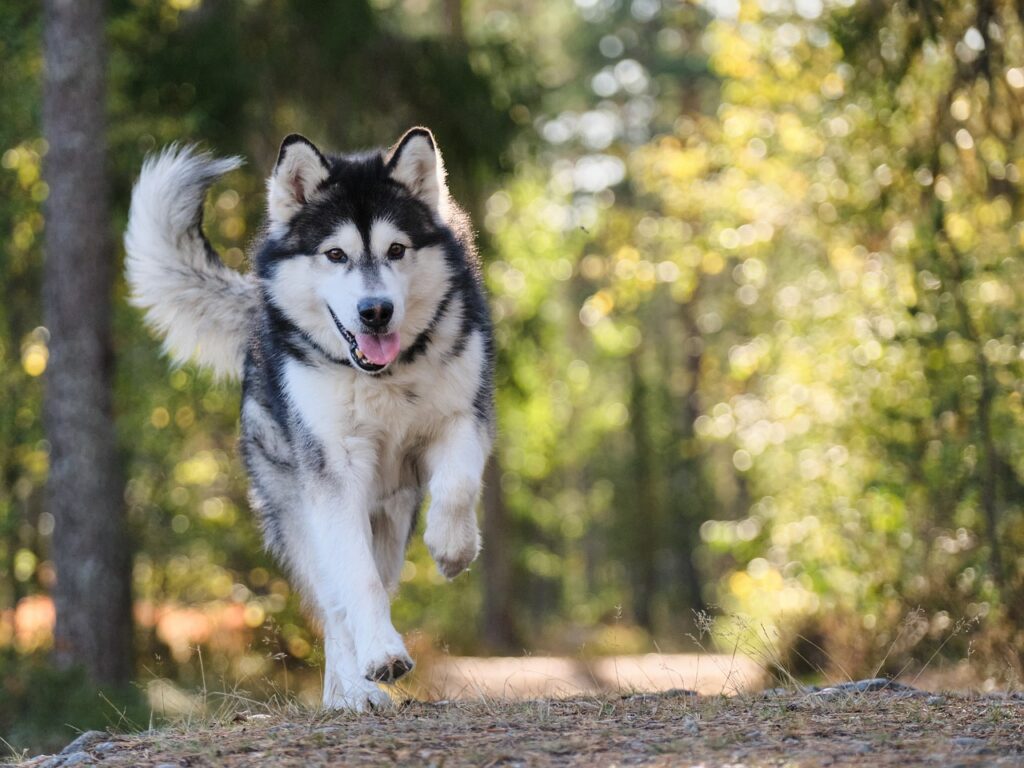Ever found yourself at your wit’s end, trying to manage your dog’s aggressive behavior? You’re not alone! Aggression in dogs can be incredibly challenging, but understanding the root causes and taking the right steps can make a world of difference. This guide will help you navigate the complexities of canine aggression, from identifying triggers to implementing effective strategies for control.
Aggression in dogs is not just challenging; it can also be alarming and dangerous. Manifestations of aggression might include barking, growling, lunging, or even biting. The first step in managing this behavior is understanding its roots. Is your dog acting out of fear, territoriality, or perhaps discomfort due to an underlying medical issue? Identifying the cause is crucial. Consulting with a vet can rule out medical problems and ensure you’re on the right track from the start.
Once medical causes are ruled out, it’s vital to seek professional help. Engaging a certified behavioral consultant or a veterinary behaviorist can provide invaluable insights. These professionals are trained to identify the triggers of aggression and develop tailored behavior modification programs. Obedience training focusing on basic commands and impulse control can also serve as a powerful tool in mitigating aggressive tendencies.
Tools and techniques for managing a dog’s aggression include using indoor gates to create safe spaces in your home, leashing your dog in public, or taking them to empty parks where they can exercise without the risk of encountering triggers. In some cases, ‘Do Not Pet’ clothing and harnesses can help signal to others that your dog needs space.
It’s important to know that punishing aggressive behavior can often exacerbate the problem. Positive reinforcement methods are recommended, rewarding your dog for calm, non-aggressive behaviors instead of punishing them for aggression. This approach not only reduces stress for both you and your dog but also builds a foundation of trust and security.
If your dog shows aggression towards other pets in your household, ensure safety by using physical separation whenever unsupervised. In some situations, basket muzzles could be useful, particularly during controlled and supervised interactions with other dogs. Your behaviorist may include desensitization techniques and supervised play as part of a comprehensive treatment plan.
Remember, dealing with aggression is an ongoing process. It requires patience, consistency, and often professional help. With the right approach, you can create a safer and more harmonious environment for both you and your furry friend.
What are the common causes of dog aggression?
A common cause of dog aggression is fear. When a dog feels threatened or scared, it may react aggressively to protect itself. This type of aggression often occurs when a dog is cornered or feels it has no escape route. Resource guarding can lead to aggression as well. Dogs may become aggressive when they feel the need to protect valuable resources such as food, toys, or even their human companions. This behavior is rooted in their instinct to ensure survival.
Which dog breeds are more prone to aggression?
Certain dog breeds are often perceived as more prone to aggression due to their history, genetics, and sometimes their physical strength. However, it’s crucial to note that individual behavior can vary widely within any breed, and factors such as training, socialization, and environment play significant roles in shaping a dog’s temperament. Breeds like the American Pit Bull Terrier, Rottweiler, and German Shepherd often come up in discussions about aggression. These breeds have historically been used for guarding or protection, which can contribute to a more assertive or defensive demeanor. Proper training and socialization are essential to ensure these dogs develop balanced behaviors. Smaller breeds such as the Chihuahua and Dachshund can also exhibit aggressive tendencies. Despite their size, these dogs might display aggression due to fear or anxiety. Owners often overlook the importance of training and socialization for smaller breeds, assuming their size makes them less of a threat, which can lead to behavioral issues.
What are effective training techniques to manage aggressive behavior?
One effective training technique to manage aggressive behavior in dogs is positive reinforcement. This method involves rewarding your dog for displaying calm and non-aggressive behavior. Rewards can include treats, praise, or playtime. By consistently rewarding good behavior, you encourage your dog to repeat those actions, gradually reducing aggressive tendencies. Another technique is desensitization and counter-conditioning. This involves gradually exposing your dog to the stimuli that trigger their aggression in a controlled and safe manner. Over time, the dog becomes less sensitive to the trigger. Counter-conditioning pairs the presence of the trigger with positive experiences, such as treats or affection, to change the dog’s emotional response from negative to positive.
Implementing a structured routine can also help manage aggression. Dogs thrive on consistency and predictability. Establishing a regular schedule for feeding, walking, and training can reduce anxiety and stress, which are often underlying causes of aggressive behavior. A structured routine helps your dog feel more secure and less likely to react aggressively. Using a head halter or a no-pull harness can provide better control during walks and training sessions. These tools allow you to redirect your dog’s attention and manage their movements more effectively, reducing the likelihood of aggressive outbursts. Proper use of these tools, combined with training, can help manage and mitigate aggressive behavior.
Some facts that you need to know
- Aggression in dogs can be caused by fear, frustration, or territorial behavior
- Proper socialization from a young age can reduce aggressive tendencies
- Positive reinforcement training is effective in managing dog aggression
- Consistent routines and clear boundaries help prevent aggressive behavior
- Consistent routines and clear boundaries help prevent aggressive behavior
- Professional help from a certified dog behaviorist can be beneficial
- Gradual desensitization and counter-conditioning techniques can help
- Regular veterinary check-ups can identify underlying health issues contributing to aggression
- Avoiding triggers and stressful situations can help manage aggression
How can dog owners identify early signs of aggression?
Growling, snarling, or baring teeth are more overt indicators of potential aggression. While these behaviors might seem obvious, they are important to recognize as they often signal that a dog is feeling threatened or uncomfortable and may escalate if not addressed. One of the earliest signs of aggression in dogs is a change in body language. This can include stiffening of the body, raised hackles, and a fixed, intense stare. These subtle cues often precede more obvious aggressive behaviors and can serve as early warnings for dog owners. Another sign to watch for is a dog’s posture. A dog that is feeling aggressive might adopt a dominant stance, such as standing tall with ears forward and tail raised. Conversely, a fearful dog might display aggression through a more submissive posture, such as crouching with ears back and tail tucked.
What role do diet and exercise play in controlling aggression?
Diet and exercise are fundamental components in managing and controlling canine aggression. A balanced diet ensures that a dog receives the necessary nutrients to maintain optimal physical and mental health. Poor nutrition can lead to deficiencies that may exacerbate behavioral issues, including aggression. For instance, low levels of certain vitamins and minerals, such as B vitamins, magnesium, and zinc, have been linked to increased irritability and aggression in dogs. High-quality proteins and complex carbohydrates in a dog’s diet can help stabilize blood sugar levels, which in turn can influence mood and behavior. Sudden spikes and drops in blood sugar can lead to hyperactivity or lethargy, both of which can contribute to aggressive behavior. Additionally, omega-3 fatty acids, found in fish oil, have anti-inflammatory properties that can support brain health and reduce anxiety, potentially mitigating aggressive tendencies.
Mental stimulation through activities such as puzzle toys, obedience training, and interactive play can also significantly control aggression. Mental exercise tires a dog out differently than physical exercise, helping to keep their mind occupied and reducing the likelihood of aggressive outbursts due to boredom or frustration. Consistency in both diet and exercise routines is key. Sudden changes in diet can cause gastrointestinal upset, making a dog irritable and more prone to aggression. Similarly, inconsistent exercise routines can lead to pent-up energy and frustration. Establishing a regular schedule for feeding and exercise can help create a sense of stability and predictability, which is beneficial for managing aggressive behavior.
| Activity Type | Examples | Benefits |
|---|---|---|
| Mental Stimulation | Puzzle Toys, Training Games, Interactive Play | Keeps mind engaged, reduces boredom, decreases aggressive outbursts |
| Obedience Training | Basic Commands, Impulse Control, Advanced Tricks | Improves behavior, fosters positive reinforcement, enhances owner-dog bond |
| Physical Exercise | Daily Walks, Running, Fetch | Burns excess energy, reduces frustration, enhances overall well-being |
| Consistent Routines | Regular Feeding Times, Scheduled Exercise, Predictable Play | Creates stability, reduces irritability, prevents frustration |
It’s important to recognize that each activity type listed in the table plays a crucial role in managing and controlling aggression in dogs. By incorporating these activities into your dog’s daily routine, you can effectively minimize stress and create a more harmonious household.
Mental Stimulation: Engaging your dog with puzzle toys, training games, and interactive play keeps their mind active and prevents boredom, which can lead to aggressive behaviors. Simple games of hide and seek or using treat-dispensing toys can provide mental challenges that deter negative actions.
Obedience Training: Implementing basic commands, practicing impulse control, and teaching advanced tricks are key elements in fostering positive reinforcement and improving overall behavior. Consistent training sessions help establish a respectful relationship with your dog and promote a stable temperament.
Physical Exercise: Regular physical activities such as daily walks, running, and playing fetch are vital for burning off excess energy and reducing frustration. Depending on your dog’s breed, the level of exercise may vary, but maintaining a routine is essential for their overall well-being.
Consistent Routines: Establishing regular feeding times, scheduled exercise, and predictable play sessions contributes to creating a stable environment for your dog. Predictability helps reduce irritability and prevents frustration that could otherwise manifest as aggression.
By combining these elements, you’re setting your dog up for success. Remember, a well-exercised and mentally stimulated dog is a happy and less aggressive dog.
Conclusion
Ultimately, addressing and controlling aggression in your dog boils down to understanding their needs and providing consistent, positive training. By tapping into effective training techniques, ensuring sufficient exercise, and fostering a peaceful, rewarding environment, you can transform challenging behavior into harmony. Believe in the journey—you and your dog can thrive together!


